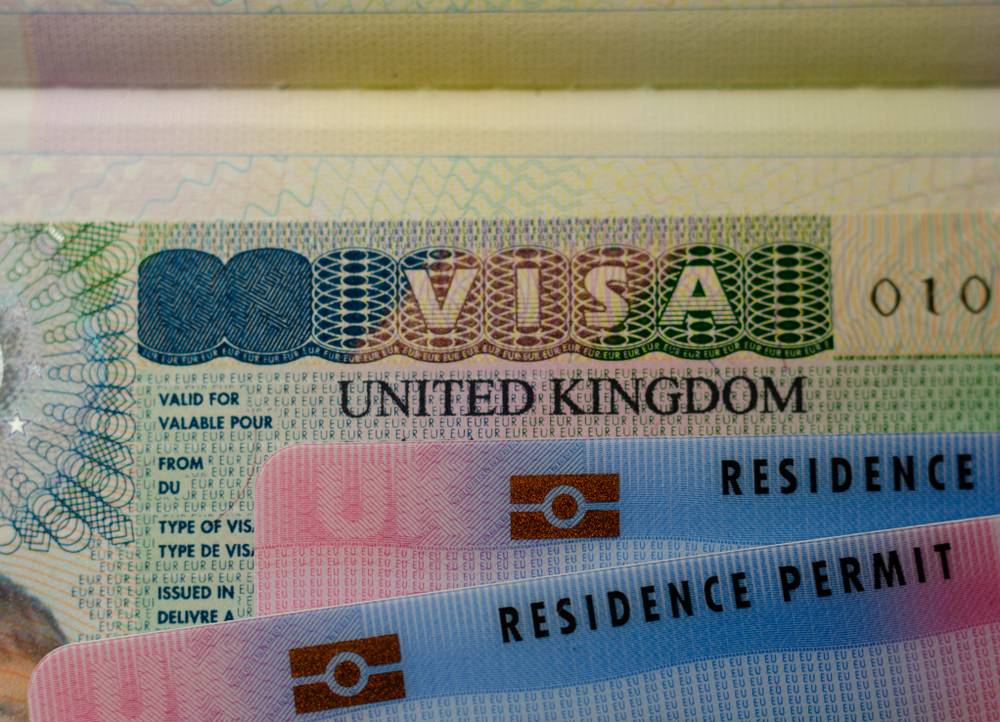Canada’s Immigration System
Canada’s immigration system is renowned for its inclusivity and adaptability. It operates on a points-based system that evaluates candidates based on factors like education, work experience, language proficiency, and adaptability.
This ensures that immigrants contribute significantly to the Canadian economy and society. The system comprises various programs, including Express Entry, Provincial Nominee Programs (PNPs), and family reunification initiatives.
Canada’s Immigration Landscape
Federal Immigration Policies
Canada’s federal immigration policies form the backbone of the nation’s approach to welcoming newcomers. This section provides an in-depth overview of the diverse range of programs initiated by the federal government to regulate immigration.
From Express Entry to family reunification programs, readers gain insights into the comprehensive and evolving nature of these policies.
Provincial Nominee Programs (PNPs)
Provincial Nominee Programs (PNPs) offer provinces a unique and tailored approach to immigration, granting them autonomy in selecting candidates who align with their specific needs.
This section delves into the significance of PNPs in the Canadian immigration landscape. Readers gain insights into how provinces leverage these programs to attract individuals who can contribute to their economic growth and cultural diversity.
The Top Provinces for Immigration
This section provides a detailed breakdown of immigration statistics across various provinces in Canada for the specified year. Analyzing these numbers unveils regional preferences and the distribution of newcomers, offering valuable insights into the diverse patterns of immigrant settlement.
British Columbia: A Magnet for Immigrants
Economic Opportunities and Diversity
British Columbia’s unique blend of economic opportunities and cultural diversity makes it a magnet for immigrants. This paragraph explores the economic landscape and the factors that contribute to British Columbia’s appeal.
PNPs in British Columbia
An exploration of British Columbia’s Provincial Nominee Programs reveals how the province strategically tailors its immigration initiatives. This section delves into the specific programs and policies that make British Columbia an attractive destination for newcomers.
Community Integration Initiatives
Beyond policies, British Columbia’s community integration initiatives play a vital role. This paragraph discusses how the province fosters a sense of belonging and community among immigrants, enriching the overall immigrant experience.
Ontario: The Economic Hub and Immigration Hub
Role of Ontario in Canada’s Economy
Ontario’s dual role as an economic powerhouse and immigration hub is examined. This section discusses how Ontario’s economic strength contributes to its attractiveness as a destination for immigrants.
Ontario’s Immigration Strategies
Delving into Ontario’s immigration strategies provides insights into the province’s unique approach to managing the influx of diverse talents. This paragraph explores the policies and initiatives that shape Ontario’s immigration landscape.
Alberta: Attracting Talent to the Prairies
Alberta’s Economic Landscape
Alberta’s economic landscape acts as a beacon, drawing talent to its expansive prairies and contributing to its growth. This paragraph explores the economic factors that make Alberta an attractive destination for immigrants.
Alberta’s PNP Success Stories
Narratives of success from Alberta’s Provincial Nominee Programs showcase the province’s ability to integrate immigrants successfully into its diverse communities. This section highlights specific success stories and their impact.
Quebec: A Unique Immigration Model
Quebec’s Autonomy in Immigration
Quebec’s unique autonomy in immigration shapes a distinctive model, reflecting its commitment to preserving its cultural and linguistic identity. This paragraph explores how Quebec’s autonomy sets it apart in the Canadian immigration landscape.
B. Distinctive Immigration Programs in Quebec
Quebec’s programs add a layer of cultural and linguistic consideration, making it stand out. This section delves into the specific programs that contribute to Quebec’s unique approach to immigration.
Atlantic Provinces: Rising Stars in Immigration
Collective Efforts of the Atlantic Provinces
The Atlantic Provinces, including Newfoundland and Labrador, New Brunswick, Nova Scotia, and Prince Edward Island, have recognized the collective potential of collaboration in shaping their demographic landscapes. United by a shared vision, these provinces have strategically worked together to position themselves as attractive destinations for immigrants.
Specific Initiatives and Programs
Exploring specific initiatives unveils the innovative strategies adopted by the Atlantic Provinces to welcome and integrate newcomers. This section highlights programs that have been particularly successful in attracting immigrants.
Challenges and Opportunities
Common Challenges Across Provinces
One shared challenge across provinces lies in effectively integrating newcomers into the labor market. Despite their qualifications, immigrants may face difficulties in having their credentials recognized, leading to underemployment.
Addressing this challenge requires collaborative efforts to create streamlined processes for credential recognition and the development of targeted programs that align immigrants with industries facing skill shortages.
Opportunities for Improvement in Immigration Strategies
Language proficiency is a crucial factor in successful integration, but language barriers persist as a common challenge. Provinces need to invest in comprehensive language training programs that not only focus on basic communication skills but also cater to industry-specific language requirements.
Read Also: Stock Clerk in the USA- A Comprehensive Guide
Future Trends in Provincial Immigration
Anticipated Changes in Immigration Patterns
Anticipated changes in immigration patterns are often closely linked to economic shifts and evolving industry demands. As industries undergo transformation due to technological advancements and global trends, the demand for specific skill sets may change.
Provinces need to stay attuned to these shifts, adjusting their immigration strategies to attract individuals with skills that align with emerging economic needs.
The Role of Technology and Remote Work
Embracing technology and the rise of remote work redefine how provinces attract and integrate immigrants into their communities. This section discusses the impact of technological advancements on the future of provincial immigration.
Read Also: Canada’s Express Entry System: A step-by-step guide
Conclusion
Summarizing the highlights of provincial immigration provides a quick reference to the diversity and vibrancy explored throughout the article. This section recaps key insights gained from the exploration of various provinces.
Reflecting on the collective impact underscores the indispensable role of provincial immigration in shaping Canada’s overarching success. This paragraph discusses how the combined efforts of provinces contribute to the nation’s diversity and prosperity.
Frequently Asked Questions (FAQs)
How do Provincial Nominee Programs work?
Provincial Nominee Programs (PNPs) serve as a critical component of Canada’s immigration strategy, allowing provinces to tailor their selection of immigrants based on local needs. Essentially, PNPs grant provinces the authority to nominate individuals for permanent residence who demonstrate the skills and attributes sought by the specific region. The process involves several steps.
What factors make a province attractive to immigrants?
Several factors contribute to a province’s attractiveness to immigrants. Primarily, economic opportunities play a crucial role. Provinces with thriving industries, job markets, and competitive salaries are magnets for individuals seeking better employment prospects. Quality of life is equally significant, encompassing factors such as healthcare, education, and cultural amenities.
How can provinces address challenges in immigrant integration?
Addressing challenges in immigrant integration requires a multifaceted approach. Provinces can invest in comprehensive settlement services that provide newcomers with the necessary support in language acquisition, employment, and cultural adaptation. Fostering community programs that encourage social interactions between immigrants and locals helps build bridges and break down cultural barriers.
Employment strategies, such as recognizing foreign credentials and creating mentorship programs, can enhance professional integration. Furthermore, educational initiatives aimed at promoting diversity and understanding contribute to a more inclusive society.
What are the long-term effects of immigration on local economies?
The long-term effects of immigration on local economies can be profound and multifaceted. Initially, immigrants contribute to economic growth by filling labor market gaps and stimulating consumer spending. Over time, as immigrants become established members of the community, they contribute to local economies through entrepreneurship, job creation, and increased tax revenues.














HI DEAR,I WANT A VISA IN CANADA
I need visa to come to Canada to look for green pastures
I need visa to visite Canada
Yes
welding job
apply cleaner
I want going to canada
I’m happy finally getting in Canada
Canada is the most place I can be and I love to see myself working in there with all my heart
yes please
yes please I need to be there
It would be the greatest opportunity if I got the chance to work and live in Canada because I love to travel and Canada is a beautiful country with amazing people and spectacular scenery
Apply as a cleaner
Am highly delighted to come over again to embrace my journey to my dream destination canada,however i have gone through the sections as detailed and am satisfied with the content. i have the hope that i will jion you soon so that we contribute to the social economic development of canada..i wsh to work hard and satisfy my purpose in working abroad..thanks ,happy christmas in advance and best regards.
driving
Good day
I am also looking for a job I am a caregiver
Where should I apply and what are the requirements?
house clean